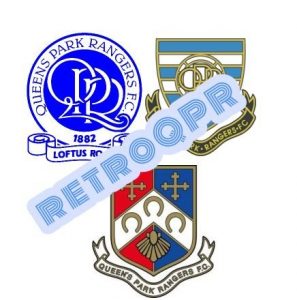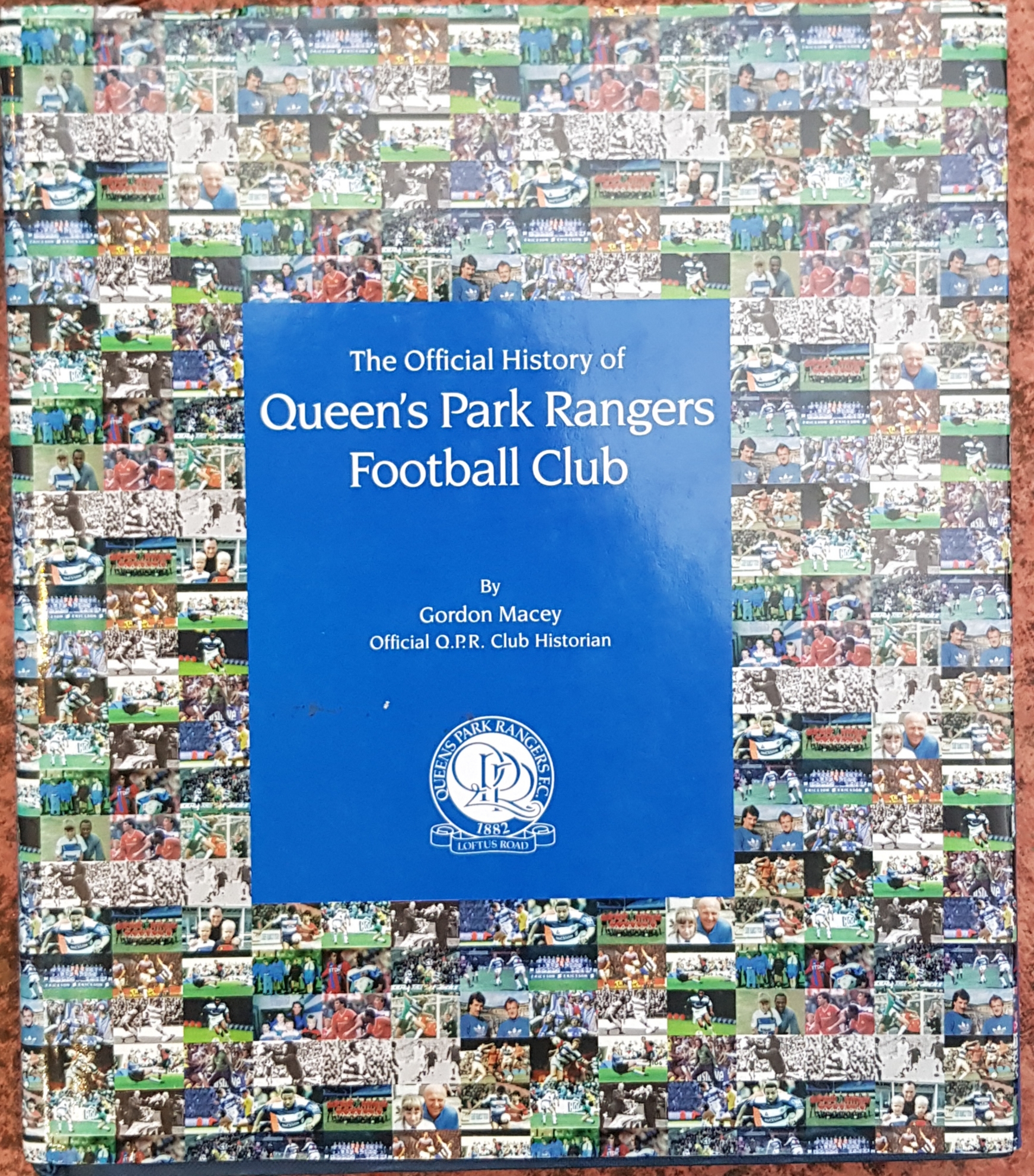Sunday 21st April 2024
Interview with the fair organiser – Martin Percival

On Sunday 21 April 2024 a QPR Football Programme and Memorabilia Fair will be taking place from 10.30am onwards in the Forever Rs Bar in the Lower Loftus Road stand. Admission £1.
This is my first post on the RetroQPR blog for quite a while. I thought I would interview Martin Percival, the Fair’s organiser, because I know that the event is of interest to many people who are also interested in the club’s history.

Q. How did the QPR Football Programme and Memorabilia Fair come about? Has anything like this taken place previously?
A. I attended the two previous fairs held at Loftus Road – they were both a very long time ago now! The May 1986 fair was organised by long time Rangers fan and collector Martin Botwright plus Daphne Biggs of the Official Supporters Club. It took place in the old Players Lounge in the South Africa Road stand. The previous one, in September 1981, was held in the then newly built club shop. The one time Rangers Club Director, Tony Williamson, was involved in that event’s organisation together with Daphne.
Both events were a lot of fun. I met many fellow Rangers collectors at them, many of whom are still good friends. Fairs are a great way of bringing people with a common interest together. So I suggested the idea of a fair at the Forevers Rs planning meeting in January. Fortunately the club were really receptive and supportive of the idea – they have helped enormously with publicising it.
Q. Why hold it in the Forever Rs bar?
The Forever Rs bar was launched in the summer of 2023 and has been a big success. People love all of the memorabilia that has been added to the bar over the last few months. Much of this has been very kindly donated by fans. So it’s the obvious venue for an event like this. It’s light and bright and has flat access for table holders. It’ll also be an opportunity for some of the fans attending to see the bar for the first time, because on match days it’s only accessible to fans with Upper and Lower Loft tickets. Any profits made will go to the Forever Rs funds.

Q. What are those funds used for?
A. They help to cover some of the costs of transportation and accommodation for the ex players and their families when they come back to Loftus Road. So many past players are from an era when they were not earning big money from the game, so they really do appreciate a bit of help with the costs of visiting Rangers again.

Q. What’s the most collectable football related type of memorabilia nowadays?
A. You name it, someone collects it! When I started collecting as a 10 year old kid in 1973, it was mostly programmes for club sides, big match programmes like the FA Cup final and internationals. Scarfs, badges, pennants and rosettes were popular too. Many people nowadays wouldn’t even know what a pennant or a rosette is!
Collecting has expanded and it’s almost anything and everything now. Old match tickets are very popular, shirts are massive, Subbuteo teams, old magazines, handbooks, photos, cards, stickers, fanzines – there’s collectors for almost everything.
Q. Will all of those collectables be on sale on 21 April?
A. I certainly hope so. I have done my best to attract a wide variety of dealers. All being well there will be something to interest everyone.
Q. How has the football memorabilia collecting hobby changed? I suspect that the internet has been probably the biggest change?
A. Yes – the launch of eBay in the late 1990s meant that that much collecting moved online. Nowadays the really rare items, especially pre war items, like player’s shirts and medals, are typically sold at online auctions or at very specialist in person auctions.
Q. Going back 50 years to when you started collecting, where did people typically find programmes?
A. Dealers catalogues and attending fairs were how most people built up their collections before the dawn of the internet, plus club shops of course. Many club shops sold programmes, especially at non league clubs. Wycombe Wanderers and Hayes, amongst others, had really good club shops. Rangers even had a specialist programme shop in addition to the club souvenir shop. In the early 1970s it was located underneath the South Africa Road stand, before it moved round to the Ellerslie Road stand in the mid 1970s. Later on, in the mid to late 1980s, Daphne Biggs used to sell old programmes plus recent away programmes from the Pools Office next door to the box office.

I don’t know when or where the first specialist programme fair took place, but my first one was the National Programme Fair at the Russell Square hotel back in May 1975. I was thrilled to find older pre 1970s programmes. It’s hard to believe, but they were not too easy to find at that time. Getting a copy of the 1967 League Cup Final programme was a huge thrill. It was actually quite hard to find then!
Q. How did you build up your own collection?
A. My first home match was v Coventry City in November 1973. As we were leaving the ground my brother and I spotted the programme shop under the old South Africa Road terrace. We asked if we could go in there. It was like Aladdin’s Cave! Thousands of old Rs programmes from the previous 5 seasons with the chequered cover design pioneered by the club secretary Ron Phillips.
What we didn’t realise at the time was that my Dad was a collector. He had kept all of his programmes and handbooks from November 1945, when he returned home from Army service. A few months later I discovered the huge box of them in the loft!! He encouraged both my brother and I in our collecting. Unfortunately almost all of his collection from 1926 to 1939 were thrown out during the war. Fortunately though his 1935/6 Supporters Club badge did survive – the very first season of the Official Supporters Club. It’s the badge that I treasure the most.
So my collection is essentially a mixture of my Dad’s programmes from 1945 onwards plus everything that I collected from 1973 onwards. It’s very comprehensive from 1945 to 2000.

Q. So who is going to be selling at the fair?
A. We have a very good mixture of dealers, book authors plus a few Rangers fans who will also be selling. Andy Evans is also having a Community Trust table. Michael Wale has also very kindly offered to draw the winning raffle ticket for a prize donated by Rs fan and collector Nick Guoth. The whole event is shaping up well. It’s been a great team effort.

So far we have confirmed;
- The book authors and Rangers fans Ray Eaton and Francis Peacock, who will both be selling their really well written recently published Rs books.
- Fan wise we have Martin Botwright who has an amazing collection and who used to do a lot of fair work with Brentside Programmes back in the 1980s and 90s.
- The main dealer is Dorian Taylor. Dorian runs DG Taylor programmes and he’s a Rangers fan, a collector and also a specialist Rangers dealer.
- In terms of badges, Les Easterbrook who has an excellent selection of badges. As with everyone else attending, Les has been a huge help in spreading the word about the event as well as sharing his advice and tips for the organisation.
- Lee Hermitage of North West Middlesex Football Programmes and Memorabilia will be attending and will mainly be bringing old classic football magazines. Lee used to run the shop at Hayes – probably the very best in the country 15 years ago in the days before Hayes sold their old Church Road ground.
- Richard Letts – Corner Programmes.
- Terry O’Neill – Terry’s Football Memorabilia specialising in programmes, books, magazines and cards.
- Tom Roe – a variety of Football Memorabilia
- Elmo Books – Emil and Karen specialising in football books
- Mark Barnes – Welling Collectables, Mark mainly specialises in football shirts

Q. Will there be Rangers items only, or will there also be items from the wider world of football?
A. It’s down to the dealers really what they bring, but I am expecting mostly Rangers, big match and also England related items.

Q. Will fans be able to pay for items by card or is cash likely to be preferred?
A. Some dealers will have electronic card readers, but I do recommend that fans try to bring some cash with them.
Q. Will there be any refreshments available?
A. The bar will not be open but we do hope to have tea/coffee available. It would be wise for people to bring a bottle of water with them plus a snack, just in case we can’t do the team/coffee.
Q. Is it dealers only, or could Rangers fans also sell programmes or other memorabilia from their collections?
A. We do have a few fans lined up and we could probably accommodate a couple more.
Q. If anyone wants a table, who do they contact?
A. We have a handful of tables left – so if anyone wants one they are very welcome to contact me at martinpercival63@gmail.com
Q. What are your hopes for the event?
A. Above all else, that people enjoy the day. If we can attract a few youngsters who then start collecting as a result of attending, then that will be great. Raising some money for the Forever Rs will be really good too.
If all goes well then, who knows, there might be scope for a similar event at some time in the future.

Q. Anything else that you would like to mention?
A. Just a thank you to everyone involved for their enthusiastic response to the event. Dealers, fans and the club have all been really supportive. As I mentioned earlier, it’s been a real team effort on the part of the dealers, the collectors, fans and of course the club. I am looking forward to meeting everyone on the 21st!
Thanks Martin!











 retroQPR 2019
retroQPR 2019





























